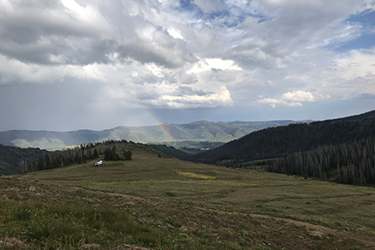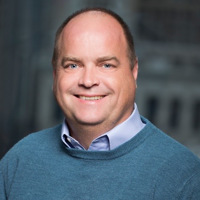From Peaks To Patients: Natural Product Development And CDMOs

By Louis Garguilo, Chief Editor, Outsourced Pharma

PellePharm, Inc., is in phase three with a natural product (NP)-based candidate derived from the roots of a plant harvested 8,000 feet high in the Rocky Mountains of Utah and Idaho.
If that’s not lofty enough, turning roots into drug involves four CDMOS, and a twelve-step chemical synthesis.
“A four-year supply chain in total,” says Gerd Kochendoerfer, Ph.D., Sr. Vice President, Head of Operations.
PellePharm has received Orphan Drug and Breakthrough Therapy Designations for Patidegib Topical Gel in Gorlin Syndrome from the FDA, and Orphan Drug Designation in Gorlin Syndrome from EMA’s Committee for Orphan Medicinal Products in the EU.
Because of the supply chain’s length and breath, for an anticipated commercial launch the company has had to purchase and manufacture materials at risk well in advance of clinical trial results.
How do Kochendoerfer and team manage and coordinate external partners?
“Basically, you are always working backwards,” he says.
A Natural Progression
PellePharm, a BioBridge Pharma company, utilizes a local organization to harvest the roots of a specific plant, which by the way, is under snow most of the year. This organization contracts with public and private landowners, and all the appropriate government agencies overseeing the land conservation and sustainability.
Kochendoerfer stresses this is all accomplished in full consideration of environmental impact, and consultation with local authorities and the community; the land and flora involved are under a full remediation and sustainability program.
After an annual harvest, the plant roots are dried and milled, resulting in a product that looks like mulch. “That product is the first production intermediate,” says Kochendoerfer.
He and team then manage the transportation of that material via truck and cargo ship to Italy, and a facility that, says Kochendoerfer, “receives biomasses from around the world, and is expert at running extractors to get desired compound out of botanical sources.”
Processes are run to isolate, separate, and yield a clean plant extract. “So this CDMO starts with our dried plant material, and spits out a white powder, which then goes for chemical modification,” he explains.
That modification begins at the first of two CDMOs performing the 12-step synthesis – seven steps at the first and five at the second. This yields the API, which now via air, travels back to the U.S., this time into the waiting arms of a CDMO specializing in topical drugs, and where it is converted into a topical gel.
“You have to plan way ahead: exactly what you need and when,” says Kochendoerfer.
“If I want a certain amount of drug for a clinical trial or launch, I need to figure out how to go back and ensure I have the materials and right timing throughout.”
Yodeling Through The Chain
How does that get managed?
Replies Kochendoerfer:

“We have to envision and then clearly convey the big picture. You can’t expect the next CMO to have that vision; you have to communicate how it all fits together. We utilize very regular personal and conference calls to manage those transitions and processes.
“It’s also about having formed personal relationships. Of course this is more difficult with the coronavirus currently, but I still make it a point, from a management perspective, to ensure we have good relationships with leadership at the various CMOs – so they understand the complexity, what we need when, why we're doing what we are doing, and the patients we are serving.”
Looking For Natural Partners
It’s said the oldest recorded text for the use of NPs as a therapeutic agent was in Mesopotamia around 2600 BC. The rest, as they say, is history: opioids (unfortunately to some degree), steroidal hormones, taxol, and let’s not forget aspirin, etc.
However, (much) more recently – circa the 1990s – Big Pharma slowed down its NP trajectories. Some projects ended up at smaller companies, while others took up the NP mantle.
For those readers looking for NP-enabled CDMOs today, how difficult is the search?
Kochendoerfer says it depends.
His product is a complex molecule, not because it's naturally derived specifically, but because it has a complex chemical structure, and is “wild harvested,” not farmed material.
“You certainly need a high degree of analytical support for the biomass extraction step and product characterization,” Kochendoerfer says. “There's regulatory guidance for characterization of potential impurities, such as pesticides, heavy metals, aflatoxins, and all of that.”
“During the extraction and work-up there is a lot of characterization work that comes into play. It’s a non-traditional extraction, a very different beast that not all CDMOs can handle or have experience with.”
Kochendoerfer adds that many of the CDMOs skilled in these NP “arts” are based in Europe – and the biggest markets are there and in the Asia Pacific region.
I ask him how many competent quotes he expects from CDMOs when he sends out RFPs for NP services.
“About a handful,” he says, not overly concerned by that answer.
The good news is the quotes he recieves are from reliable and experienced CDMO partners. “The one we're working with now,” he tells me, “has been around since 1921.”
Internally, and specific to outsourcing CMC activities, PellePharm has a core group of six, including two people in quality and one in project management, with additional support from consultants.
“Basically, our task is overseeing and coordinating these vendors – ensuring we have, and are utilizing, the systems and processes to support it all,” explains Kochendoerfer. “Then there are clinical operations and clinical science groups that oversee outsourcing of the CRO aspects”
A final question – perhaps most pertinent to readers with certain aspirations:
If you were starting a new organization, or in-licensing an NP-derived development program today, could it be done without substantial CDMO support?
“No,” comes a swift reply. “I mean, it's usually way too complex to start on your own as a small organization.”
“You need the typical CDMOs for some of the downstream chemistry of course, and in our case one specializing in topical formulations.
“In terms of extraction and purification, for example, we don’t want a lot of chromatography, so that's why it was important to get help in developing an extraction and crystallization approach.
“So those sort of decisions both drive the need for skilled CDMOs, and a careful consideration of who the best of those are for you.”
And that, I’d wager to say, sounds natural to all Outsourced Pharma readers.
